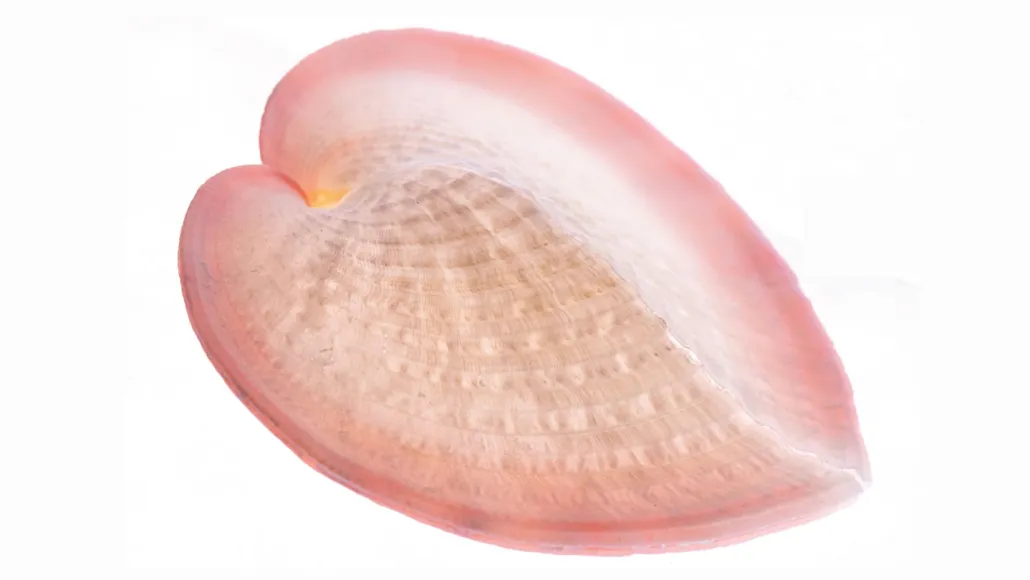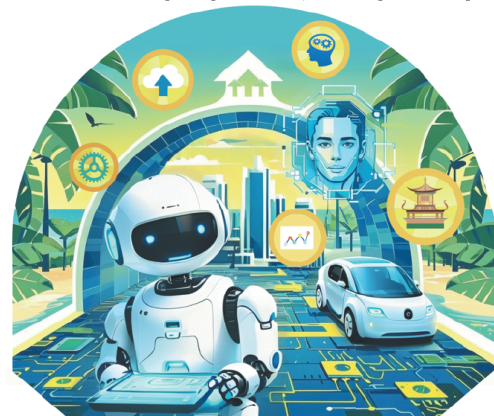Nature’s first fiber optics could light the way to internet innovation
In a discovery that blurs the line between biology and technology, scientists have found that heart-shaped clams use fiber optic–like structures to channel sunlight through their shells in much the same way that telecommunications company use fiber optics to deliver high-speed internet connectivity into homes.
This innovation, a first known example of bundled fiber optics in a living creature, helps to explain how heart cockles (Corculum cardissa) — a marine bivalve found in shallow waters across the Indian and Pacific Oceans — harness sunlight to nourish symbiotic algae living within, while protecting them from harmful ultraviolet rays. In return, the algae provide the clams with sugars and other essential nutrients.
The finding highlights an evolutionary adaptation that parallels human technological ingenuity, and offers potential insights for the development of bioinspired optical systems in the future, researchers report November 19 in Nature Communications.
Heart cockles are small, walnut-sized bivalves best known for their distinctive shell shape. But a close look reveals the shells are pockmarked with “windows” — minute, transparent structures that permit light to pass through.
This unique architecture is rooted in the special properties of aragonite, a crystalline form of calcium carbonate (SN:1/21/03). These aragonite crystals are arranged in micron-sized tubes that function like fiber-optic cables, guiding light with exceptional precision, while filtering out harmful ultraviolet radiation that could damage the clams’ symbiotic algae or their own delicate tissues.
Evolutionary biophysicist Dakota McCoy, of the University of Chicago, and her colleagues performed microscope experiments demonstrating that the sun-facing side of the shell allows more than twice as much photosynthetically useful light to penetrate inside as it does harmful, DNA-damaging ultraviolet light.
According to McCoy, this light-filtering capacity likely helps reduce the risk of bleaching, a deadly phenomenon affecting both corals and clams alike that is currently being exacerbated by climate change (SN: 8/7/24).
Computer simulations further demonstrated that the arrangement of the fiber optic–like structures represents an evolutionary trade-off, finely tuned to balance the shell’s mechanical strength with its ability to efficiently transmit light.
“Finally, somebody has actually worked this out,” says Jingchun Li, an evolutionary biologist at the University of Colorado, Boulder, who studies the symbiotic relationship between heart cockles and their algae.
The heart cockles aren’t alone in channeling sunlight to symbiotic algae. Other marine creatures, such as giant clams, do this too (SN: 6/22/18). But whereas these massive, ridged bivalves rely on specialized cells to draw in beneficial sunlight, heart cockles, with their shells shut tight, take advantage of their unique aragonite architecture.
“They’re using minerals in their shells to do this and not biological structures,” says Sarah Lemer, an evolutionary geneticist at the Leibniz Institute for the Analysis of Biodiversity Change in Hamburg, Germany, who was not involved in the study. “It’s really neat.”
#Innovation #FiberOptics #NatureInspiredTech #InternetTechnology #Biomimicry #SustainableTech #NextGenInternet #TechTrends #OpticalNetworking #FutureOfConnectivity
Website link: youngscientistawards.com
Nomination Link: https://youngscientistawards.com/award-nomination/?ecategory=Awards&rcategory=Awardee
Contact Us: support@youngscientistawards.com _________________________________________________________________________________________________________
Social Media:
Twitter : https://twitter.com/youngsc06963908
Linkedin- : https://www.linkedin.com/in/shravya-r...
Pinterest : https://in.pinterest.com/youngscienti...
Blog : https://youngscientistaward.blogspot....
Tumblr : https://www.tumblr.com/blog/shravya9v




Comments
Post a Comment